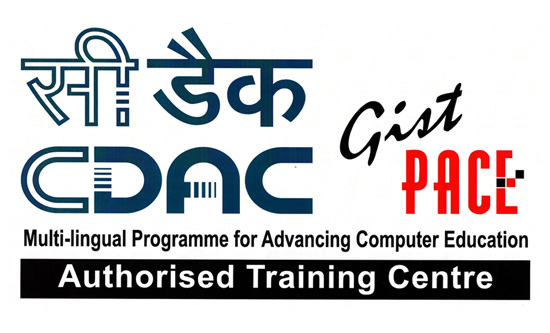DATA SCIENTIST TRAINING WITH PYTHON
Big businesses need high-end tools and technology to drive business insights and perform critical data analysis, developing predictive models. Data Science helps businesses manage large sets of data, using different algorithms and mathematical analysis for extracting valuable insights to apply strategic decisions.
GN Infotech provides the best Data Science & Analytics Training in Khanna with below mentioned course curriculum. GN Infotech labs are equipped with latest software so that students can get 100% practical training.
At the completion of training the participant will exhibit the following :
- - Hands-on experience setting up an integrated analysis environment for doing data science with Python.
- - An understanding of how to use the Python standard library to write programs, access the various data science tools, and document and automate analytic processes.
- - Orientation to some of the most powerful and popular Python libraries for data science including Pandas (data preparation, analysis, and modeling; time series analysis), scikit-learn (machine learning), and Matplotlib and Seaborn (data visualization).
- - Working knowledge of the Python tools ideally suited for data science tasks, including: 1. Accessing data (e.g., text files, databases)
2. Cleansing and normalizing data
3. Exploring data (e.g., simple statistics, correlation matrices, visualization)
4. Modeling data (e.g., machine learning)
WHY DATA SCIENCE TRAINING AT GN INFOTECH ?
- - Industry Compliant Syllabus
- - Multi-Platform Demonstration
- - Product Based Training
- - Real-Time Case Studies
- - Use of Latest Tools & Technology
- - LCD equipped class room
- - Unlimited Lab facility
- - Faculty drawn from Industries
- - Daily Handouts & Lab Exercise
- - Workshops on New Technologies
TARGET AUDIENCE :
- - Data Scientist/ Data Analytics
What is Data Science ?
Tools and Techniques in Data Science
Introduction to Tools and Technqiues in Data Science
Lifetime Value Analysis
Introduction to R
R Base Software, CRAN, Packages
Interfaces to R, GUIs
RStudio The IDE
Basics in R
Vectors in R
Date and Time Values
Handling Missing Values in R
Matrices and Data Frames in R
Looking at Data in R
Introduction to SAS
SAS History and Overview
SAS University Edition Software
Interfaces to SAS
Data Input in SAS
Keep and Drop Variables
Basics in SAS - Data Step and Libname
Basics in SAS – Procs
Setting Up Your Integrated Analysis Environment & Tools Overview
IPython Shell
Custom environment settings
Jupyter Notebooks
Script editor
Packages: NumPy, SciPy, scikit-learn, Pandas, Matplotlib, Seaborn, etc.
Part 1:Data Structures
Introduction to Jupyter
Other Python Interfaces
Data Structures
Strings
Datetime
Numeric
Lists
Tuple
Dicts
Loops
Functions
Classes
Part 2: Packages
Using functions from Packages in Python
Math Package
DatetimePackage
OS Package
SciPy Package
NumPy Arrays
Slicing Arrays
Stacking Arrays
Other Packages
Data types and objects
Loading packages, namespaces
Reading and writing data
Simple plotting
Control flow
Debugging
Code profiling
Acquiring Data with Python
Loading from CSV files
Accessing SQL databases
Cleansing Data with Python
Stripping out extraneous information
Normalizing data
Formatting data
Introduction to Numpy
Activity-Sequence it Right
Creating and Printing an ndarray
Class and Attributes of ndarray
Basic Operations
Activity-Slice It
Copy and Views
Mathematical Functions of Numpy
Assignment 1
Assignment 2
Assignment 3
Quiz
The NumPy array
N-dimensional array operations and manipulations
Memory mapped files
Data Visualization
2D plotting with Matplotlib
Advanced data visualization with Seaborn
Line Properties (x,y) Plot and Subplots Knowledge Check Types of Plots Assignment 1 Assignment 2 Assignment 3 Quiz
Introduction to SciPy
SciPy Sub Package - Integration and Optimization
SciPy sub package
Demo - Calculate Eigenvalues and Eigenvector
SciPy Sub Package - Statistics, Weave and IO
Assignment 1
Assignment 2
Assignment 3
Quiz
Introduction to Pandas
Understanding DataFrame
Data Import
View and Select Data Demo
Data Inspection
Data Quality
Data manipulation with Pandas
Statistical analysis with Pandas
Time series analysis with Pandas
Data Querying
Missing Values
Data Operations
File Read and Write Support
Knowledge Check-Sequence it Right
Pandas Sql Operation
Data Summarizing
Data Exploration
Assignment 1
Assignment 2
Assignment 3
Assignment 4
Chart choosing
Measures
Dimensions
Functions
Machine Learning Approach
Supervised Learning Model Considerations
Scikit-Learn
Input: 2D, samples, and features
Supervised Learning Models - Linear Regression
Supervised Learning Models - Logistic Regression
Unsupervised Learning Models
Model Persistence and Evaluation
Estimator, predictor, transformer interfaces
Pre-processing data
Regression
Classification
Model selection
Assignment
Assignment
Assignment
Python, R Studio, Excel, SAS, Tableau


